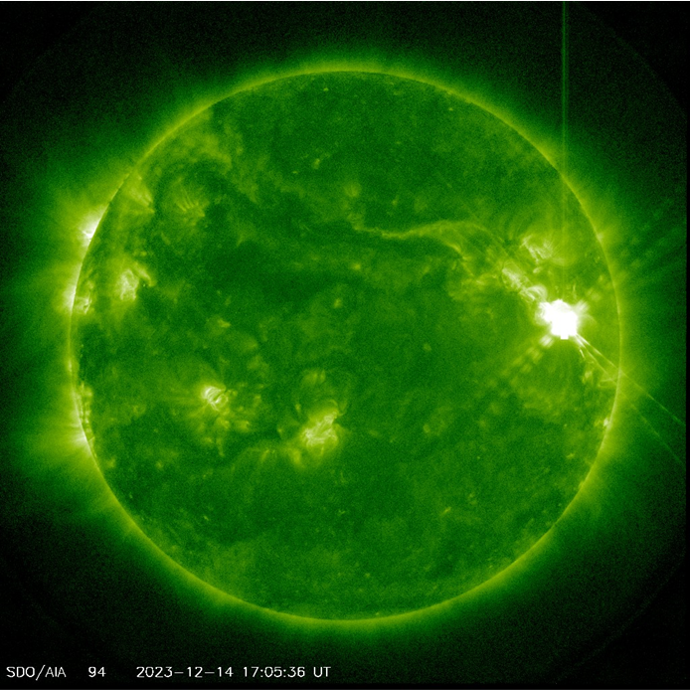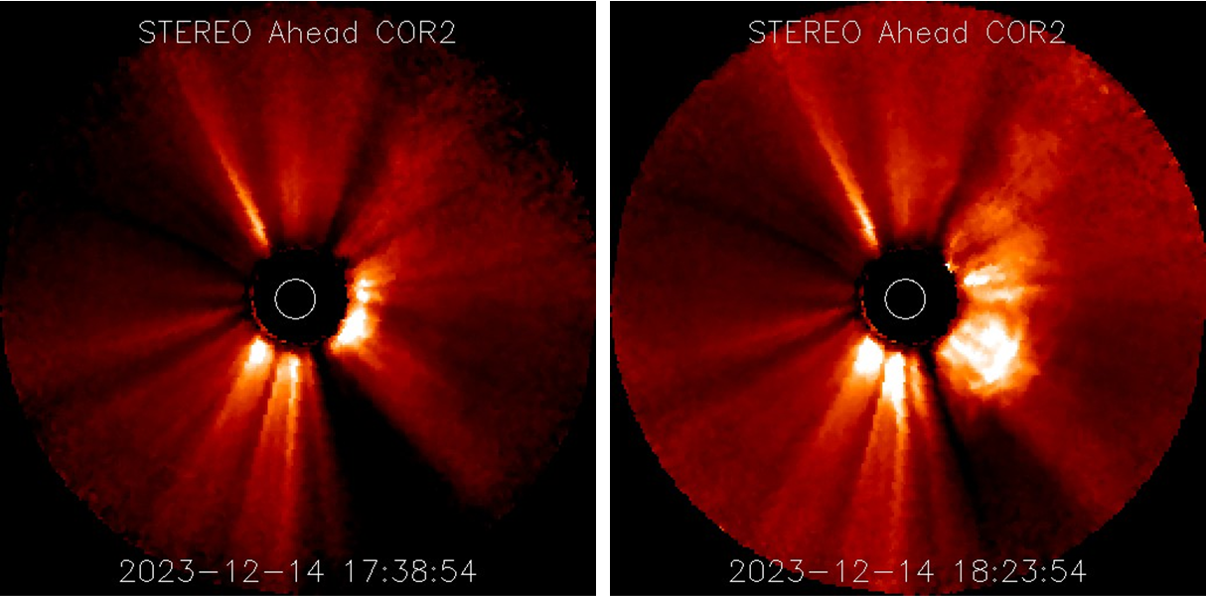NOAA 3514 was the source of an X2.8 flare that peaked on 14 December at 17:02UTC. The active region was also the source of an M5.8 and an M2.3 flare earlier today. It has a complex sunspot structure and at least 2 magnetic delta configurations. A delta configuration requires 2 spots of opposite magnetic polarity located within the same penumbra and less than 2 degrees apart. They are notorious for strong X-class flares. The images underneath are from SDO/HMI and show the white light and magnetic outlook of the sunspot group at 17:45UTC (14 December).

The extreme ultraviolet (EUV) image underneath shows the Sun and the X-class flare at a temperature of multi-million degrees (SDO/AIA 094). The blooming and diffraction patterns in the EUV images are image artefacts, and are not related to the flare. This is the strongest solar flare so far this solar cycle (the previous one maxed out at X2.2), and the strongest since the X8.2 event (rescaled X11) on 10 September 2017 and the X9.3 flare (rescaled: X13) from 6 September 2017. There's a good chance that NOAA 3514 will produce additional strong M-class flares or even an X-class event during the coming days, until the region has fully rounded the Sun's west limb within about 3 days.

First coronagraphic imagery by STEREO-A shows a (partial) halo coronal mass ejection (CME) to the west, north and south with a plane of the sky speed around 850 km/s. This is much less than the speed deduced from radio emissions (Type II burst), mainly because the latter gives the true speed of the shock of the CME based on a model for the solar atmosphere, whereas the coronagraphic images give the projected speed of the CME. The true speed of the CME is probably somewhat higher, but it will require some additional coronagraphic images to sort this out. Other EUV imagery show a strong coronal wave to the west and southeast, suggesting there may be an earth-directed component associated with this CME (Solar Demon). Analysis if and when the CME might reach the earth environment is ongoing, so keep an eye on the SIDC webpage!

So far, well over 2 hours since the flare's peak, the proton flux is still steady at background values. The 18UTC value of the 10.7cm radio flux as measured in Penticton (BC, Canada) was severely affected with a value well over 800 solar flux units (sfu). The undisturbed value is currently around 135 sfu, and so the 20UTC radio flux value may still be impacted by today's X-class event. The map underneath (D-RAP ; left) shows that the soft-ray and EUV emission from this flaring event may have resulted in a radio black-out affecting HF radio communications over mainly over the East-Pacific, Latin-America, and the Antarctic Peninsula. An advisory for civil aviation has been issued (PECASUS, SWPC ; right).






